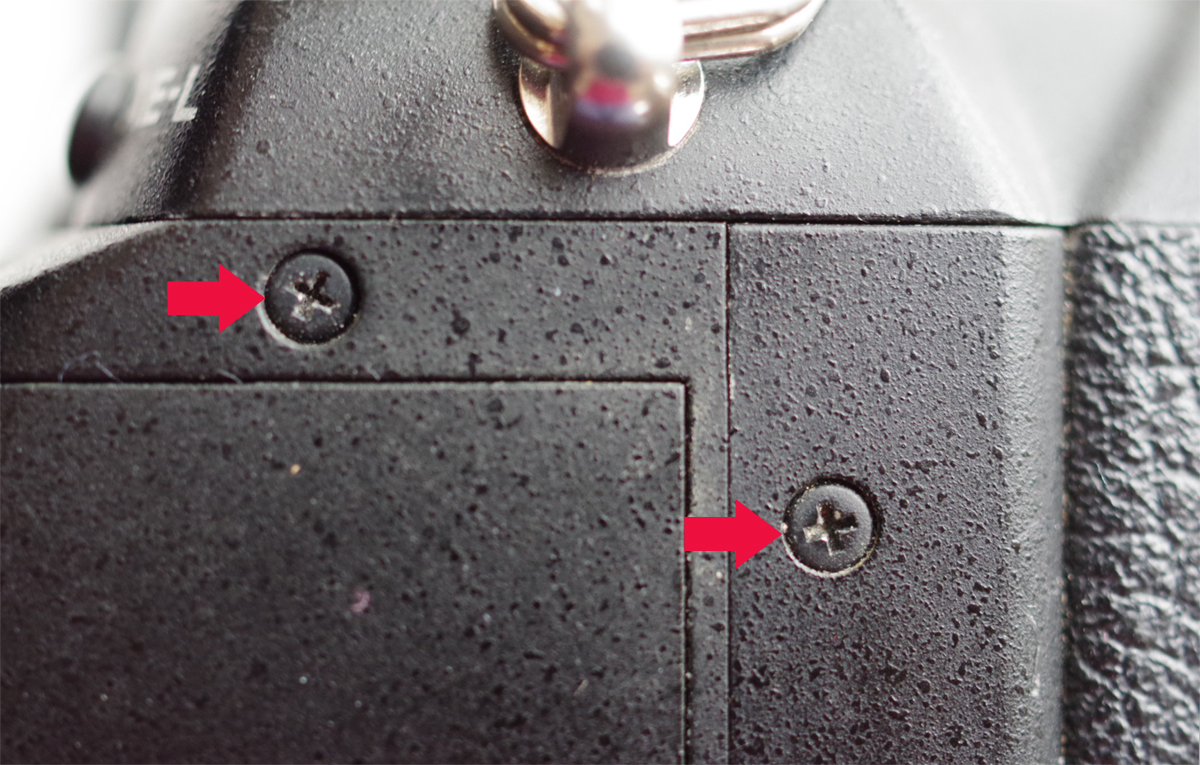For: K7 / K5 / K5II /K5IIs / K3 / K3II (most likely KP as well)
The E-Dials of the professional Pentax bodies are different to those in the entry cameras.
I haven't checked yet on the K30/50/500 nor K-S1/K-S2/K-70 but those will either be similar as you can read in
THIS TUTORIAL or similar to the K5/7/3 etc.
Disassembling is very easy because with the K7 and K3 only the TOP needs to come off for both E-Dials.
For the K5-Series the top-cover off will only give you access to the back E-Dial!
For the front-E-Dial of the K5-series read
HERE for more detailed instructions
Best to make some simple drawings or print photos of all sides and glue those onto a piece of cardboard.
Markings where the screws are located, pinch 2mm holes and then stick the screws inside there.
Tools:
-
JIS 00 or 000 screwdriver: I use the
Vessel 9902-set because I like the length which is usefull for the solenoid repairs as well as for the screw inside the battery-chamber. I don't like the Vessel T-Series very much, too flimsy and not strong enough.
But a PH00 will do as well!
-
DeoxIT FaderLube: But
no contact cleaner. Avoid like hell!
- very small flat-blade screwdriver if you want to clean the ISO and EV buttons as well (which is sensible)
Warning: Although the contacts of the flash-condensor are well hidden behind the front-cover and thus there is not the usual shock-hazard as when the body is completly disassembled: Do not poke around in the flash-region itself, neither swallow the Li-Ion battery nor any other parts, because this might lead to
different hazards which you definitely want to avoid! Not so if you work on the front E-Dial of the K5 Series. But this is explained in the given link!
1. Two screws behind the rubber eyecup:  2. Open pop-up-flash: Two screws there:
2. Open pop-up-flash: Two screws there:  3. One screw deep inside the battery-chamber:
3. One screw deep inside the battery-chamber:  4. Two screws right side (grip):
4. Two screws right side (grip):  5. Three screws left side
5. Three screws left side (one is hidden underneath the rubber =
green arrow):

Here the hidden one again (
left red arrow):

You don't need to unscrew the one right behind the X-Sync-Socket (
blue arrow) ! Only necessary if you want to take the front off!
But if ever you want to take the front off: There are two wires connected to the X-Sync-Socket. You then also need to unscrew another screw holding the tiny circuit-board behind that socket with those 2 wires! Then you pull the circuit board off and only then you can take the front off!
Now you can lift the TOP of your Pentax but be carefull, there are wires and flat-ribbon-cables!
Carefully place it on the left side without bending/hurting the cables/wires! Not difficult, just some care needed.
6. Three screws for the Top-LCD:  7. Two screws for the "Back-E-Dial", here the K7, which is slighly different to the K5 and K3:
7. Two screws for the "Back-E-Dial", here the K7, which is slighly different to the K5 and K3:  8. Two screws for the "Front-E-Dial"
8. Two screws for the "Front-E-Dial"
a) K-7:
 b) K-5 and K-3:
b) K-5 and K-3:  c) One screw on the backside of the Front-E-Dial:
c) One screw on the backside of the Front-E-Dial:  9. The E-Dial taken off (
9. The E-Dial taken off (showing the ALPS-plastic-film-conductor potentiometer)
:

- Spray a tiny amound of "DeoxIT FaderLube" onto this tiny potentiometer which sits on the green board. This is important, don't use any other stuff because only this quite expensive FaderLube is designed for plastic-film potentiometers! I tried once a high quality spray (Contact-Gold-2000) designed for normal potentiometers on a K-7 and after a few month the problem was worse: As far as I know DeosIt FL is the only one clearly defined for film-potentiometers. So really don't be mean there but get the proper stuff!
- Clean leftovers right away off and mount it back onto the wheel with the 3 screws, turn the wheel several times into both directions!
- Same procedure for the front-E-Dial (I would always do both, even if it is just one not working alright!)
10. As you are already that far and the top-cover is lose, you now can clean the EV- and ISO-Buttons as well,
remove the three screws and clean them just with some isopropyl-alcohol or similar:

Each button is fixed with a tiny retaining ring (radial e-clip). You just losen it with a tiny flat-blade screwdriver and make sure, it doesn't jump off!
So this white blanket under the camera is a good idea.
Of course it makes sense to clean the
ON/OFF-SWITCH at the same time at the same time with
isopropyl-alcohol as well:
Use a
cotton-swab and rub the lower-part carefully, another cotton-swap for those 3 fingers with 2 contact-points on each but only from the back to the front, so that you avoid bending them! They are a bit sensitive and must stay exactly in their position! Not that one bends them easely but they are made out of gold-plated beryllium-copper (spring-copper) which is strong and durable but I have seen some bent ones, then they need to be replaced. So just some care is needed.
Re-assemble everything
and enjoy how smooth the E-Dials work again!
I wrote a "DSLR-Specific" tutorial for each of them:
K-5 and K-7 K-3 

 Similar Threads
Similar Threads 




























 Post #1 by photogem
Post #1 by photogem








